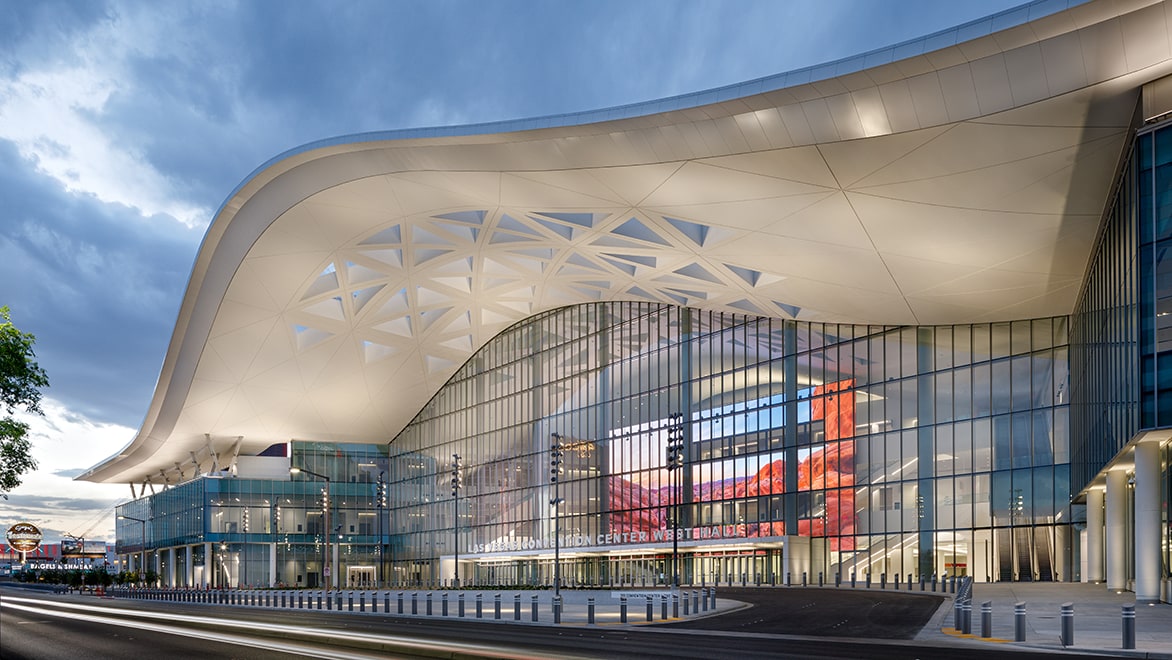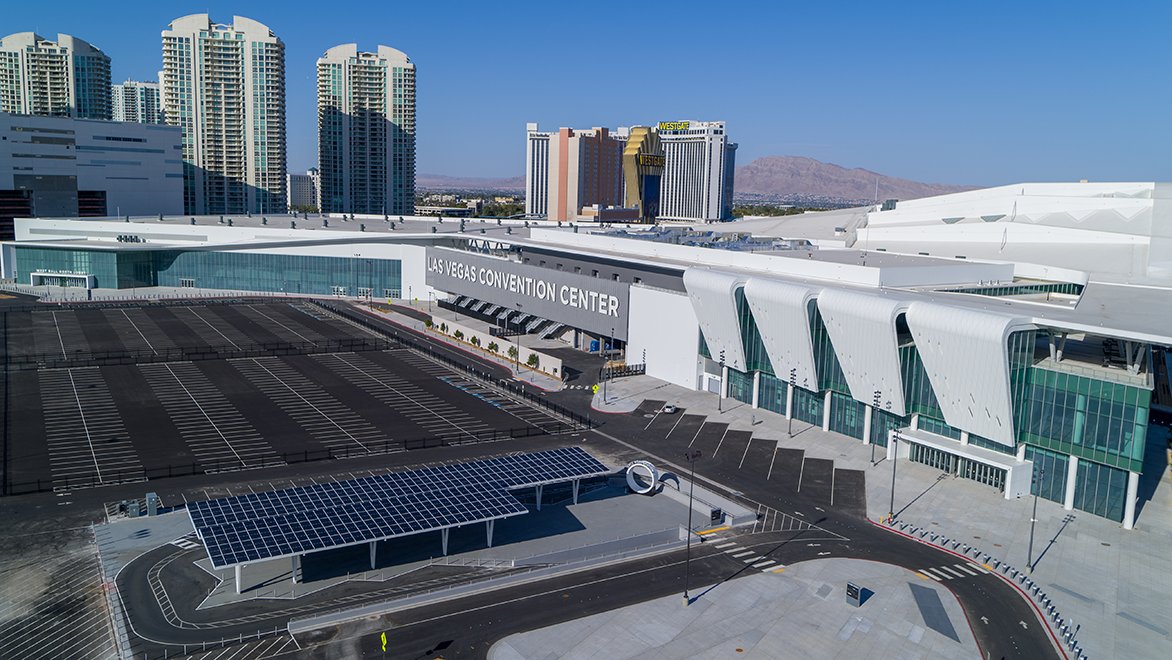TVS DESIGN
How TVS Design created a framework for digital design transformation
Share this story
Summary
Since its founding in 1968, TVS Design, an Atlanta-based architecture and interior design firm, has designed such notable buildings as the CNN Center. The 170-person firm has always focused on matching design skills with innovation and technical knowledge, but this mission has taken on greater urgency in the digital age. As new digital tools and technology impact the practice of architecture and design, giving firms the ability to transcend traditional architectural processes, firms like TVS Design need to evolve their processes to keep pace with the evolution of practice. To accelerate this evolution, “we had to create an ecosystem of learning and knowledge-sharing,” says Michael Hodge, principal for digital practice and design technology. “Our goal was to integrate people, processes, and technology.”
“While we’re a smaller firm, we plan to become a leader in maximizing our technical capabilities. Now that we have a hub for documentation, new delivery models, and our cultural changes, we’ve made ourselves a firm for the 21st century.”
—Michael Hodge, Principal, Digital Practice and Design Technology, TVS Design

Rendering of entrance to Las Vegas Convention Center. Image courtesy of TVS Design.
People, Process, and Technology
The firm’s Digital Practice Studio framework involves assigning a core team structure to every TVS Design project, including at least one digital practice leader (DPL). At the highest level, the Digital Practice Studio structure is intended to formally build digital strategy into all design workflows, so that digital expertise is baked into every project. “It’s not just about getting the software,” Hodge says. “It’s figuring out how to use it. And it’s not just establishing best practices—it’s about the best utility of those practices.”
While the TVS Digital Project Studio is separate from IT, the studio works in parallel with IT to develop technology strategy and research new solutions and tools. Hodge and other DPLs monitor “maturity indices” across the firm to determine which people and teams may need help in advancing their skill sets—for example, by receiving coaching from a DPL, or by bringing in technology consultants for occasional training. Emilio Hernandez is the Digital Practice Studio’s computational design lead, and he oversees some of this training, as well as being the firm’s eyes and ears on digital transformation trends. For example, leveraging tools in the Autodesk® AEC Collection®, he guides project teams on the use of Revit® building design software for creating complete models, as well as Dynamo for Revit computational BIM design software for exploring designs and automating tasks, and BIM 360™ Design construction management software as the hub for project delivery and documentation.

Rendering of the LaGuardia Mixed Use Development project, Flushing/Queens, NY. Photo courtesy of TVS Design.
Smaller Teams, Bigger Impacts
TVS Design’s project for the expansion of the Las Vegas Convention Center (LVCC) was one of the first that drew on the firm’s new framework to balance digital design processes. “This was the moment when we saw that we could have smaller teams but still operate an efficient design process,” says Hernandez. “We realized that for mundane tasks that usually take up a lot of time, we could use parametric modeling processes and computational design for greater efficiency—exploring different permutations to see what’s successful. We realized that for mundane tasks that usually take up a lot of time, we could use parametric modeling processes and computational design for greater efficiency—exploring different permutations to see what’s successful.”

Completed Construction Image of Las Vegas Convention Center Expansion. Photo courtesy of TVS Design.
A Digital Framework to Design Anywhere
The LVCC design was uniquely suited to the new TVS Design digital workflows in several ways. It includes a steel “ribbon” that helps visually connect the different parts of the structure. With many models in motion for the large project, TVS Design project teams had trouble sharing models seamlessly internally and externally, which threatened to slow the progress. The design for a mixed-use project near New York’s LaGuardia Airport—including a hotel, as well as residential and community spaces—became a full-on test case for the firm’s digital transformation and a look at design for manufacture and assembly (DfMA) processes. By shifting to the BIM 360 unified design platform to share multiple models for the LVCC project, TVS Design saw the benefits of moving to the cloud.
“It certainly helped us better manage not just outside contractors and partners, but also our internal teams,” Hernandez says. “Because we knew upfront that the design would be complex, we knew we needed to coordinate models in Revit,” Hernandez explains. “We wanted to use digital tools to coordinate this project all the way from design to construction.” The challenges were many. To meet the client’s request for a dynamic, impactful design, the project included the building’s podium, as well as a large open area between three towers. There were also fabrication challenges in terms of creating precast panels and integrating them with windows, as well as maximizing the number of units in the hotel space.
Start-to-Finish Design Storyline
The LaGuardia mixed-use project was the first in which TVS Design expected to go beyond simply managing the models in the cloud from start to finish. In addition, the firm had to include processes that connected fabrication of façade panels directly from the design model. This meant the project team and designated digital leaders needed buy-in from TVS Design leadership. “We told them that it all goes back to efficiency,” says Hodge. “If we wanted to help the client by delivering a design better and faster, and model towards construction, applying a defined digital practice process specific to DfMA was the way to do it.” With models in the BIM 360 platform, and the ability to share design options and obtain construction estimates even as the project was still in the design stage, Hodge and his team could create a start-to-finish storyline showing the value of digital tools. This added efficiency to the design process, and created faster, collaborative communication between clients and teams. “We save the client time because the design model also becomes the fabrication model,” Hernandez explains. “We can have immediate communication with people who check fabrication and cost—and then we can send the entire 3D model to the cost estimator.” The digital framework that TVS Design has created is well on its way to becoming a standard operating procedure for all company projects. As the firm’s digital abilities mature, it can take on jobs that used to be limited to larger firms, according to Hodge. “While we’re a smaller firm, we plan to become a leader in maximizing our technical capabilities,” says Hodge. “Now that we have a hub for documentation, new delivery models, and our cultural changes, we’ve made ourselves a firm for the 21st century.”
“We save the client time because the design model also becomes the fabrication model. We can have immediate communication with people who check fabrication and cost—and then we can send the entire 3D model to the cost estimator.”
—Emilio Hernandez, Computational Design Lead for the Digital Practice Studio, TVS Design